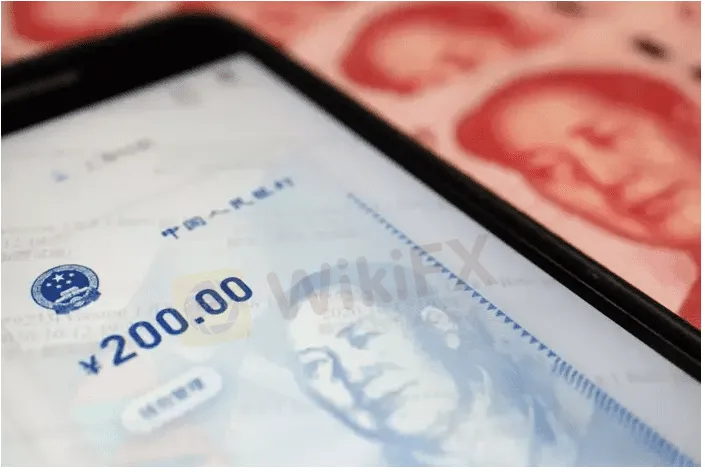简体中文
繁體中文
English
Pусский
日本語
ภาษาไทย
Tiếng Việt
Bahasa Indonesia
Español
हिन्दी
Filippiiniläinen
Français
Deutsch
Português
Türkçe
한국어
العربية
SWIFT sets out blueprint for central bank digital currency network
Abstract:Financial messaging system SWIFT has laid out its blueprint for a global central bank digital currency (CBDC) network following an 8-month experiment on different technologies and currencies.

The trial, which involved France and Germanys national central banks as well as global lenders like HSBC, Standard Chartered and UBS, looked at how CBDCs could be used internationally and even converted into fiat money if needed.
Around 90% of the world‘s central banks are now using, trialling or looking into CBDCs. Most don’t want to be left behind by bitcoin and other cryptocurrencies, but are grappling with technological complexities.
SWIFTs head of innovation Nick Kerigan said its trial, which will be followed by more advanced testing over the next year, resembled a bicycle wheel where 14 central and commercial banks in total connected spoke-like into its main hub.
The idea is that once scaled-up, banks may need only one main global connection, rather than thousands if they were to set up connections with each counterpart individually.
“We believe that the number of connections needed is much fewer,” Kerigan said. “Therefore, you are likely to have fewer breaks (in the chain) and you are likely to achieve greater efficiency.”
The trial also tested different underlying CBDC technologies known as Distributed Ledger Technologies. The use of various technologies has also been raised as a potential hurdle for rapid global adoption.
There was a separate trial too carried out alongside Citi, clearing house Clearstream and Northern Trust on ‘tokenised’ assets – traditional assets like stocks and bonds transformed into digital tokens that can then be issued and traded in real-time.
Some countries such as the Bahamas and Nigeria already have CBDCs up and running. China is well advanced with real-life trials of an e-yuan, while central bank umbrella group, the Bank for International Settlements, has also been running cross-border trials.
SWIFTs main advantage though is that its existing network is already usable in over 200 countries and connects more than 11,500 banks and funds.
The Belgium-based firm has gone from being virtually unknown outside banking circles to a household name this year after it cut most of Russia‘s banks off from its network as part of the West’s sanctions for the countrys invasion of Ukraine.
Kerigan said that kind of move could also happen in a new CBDC system, but doubted whether it would stop countries joining one.
“Ultimately what most central banks are looking to do is to provide us with a CBDC for the people, the businesses and the organisations in their jurisdiction.”
“So a solution thats fast and efficient and that gains access to as many other countries as possible would seem to be an attractive one.”

Disclaimer:
The views in this article only represent the author's personal views, and do not constitute investment advice on this platform. This platform does not guarantee the accuracy, completeness and timeliness of the information in the article, and will not be liable for any loss caused by the use of or reliance on the information in the article.
Read more

Italian Regulator Warns Against 5 Websites
The Italian regulator, CONSOB has issued a warning against five websites offering unauthorized financial services. This regulatory action aims to protect the public from fraudulent activities.

WikiEXPO Dubai 2024 is coming soon
3 Days Left!

Trader Exposes Unethical Practices by STP Trading
A recent allegation against STP Trading has cast doubt on the firm's business practices, highlighting the potential risks faced by retail traders in an increasingly crowded and competitive market.

What Makes Cross-Border Payments Easier Than Ever?
Cross-border payments are now faster, cheaper, and simpler! Explore fintech, blockchain, and smart solutions to overcome costs, delays, and global payment hurdles.
WikiFX Broker
Latest News
Hackers Charged for $11M Crypto Theft Using SIM-Swaps
Role of Central Banks in the FX Market
FCA Alerts Against Sydney FX
What Makes Cross-Border Payments Easier Than Ever?
Trader Exposes Unethical Practices by STP Trading
Malaysian Man Loses RM113,000 in Foreign Currency Investment Scam
Bitcoin Nears $100,000: A Triumph of Optimism or a Warning Sign?
Mastercard Partners with JPMorgan for B2B Cross-Border Payments
FCA Identifies Clone Firm Exploiting Admiral Markets' Credibility
Coinbase Under Scrutiny Amid Wrapped Bitcoin Delisting Controversy
Currency Calculator


